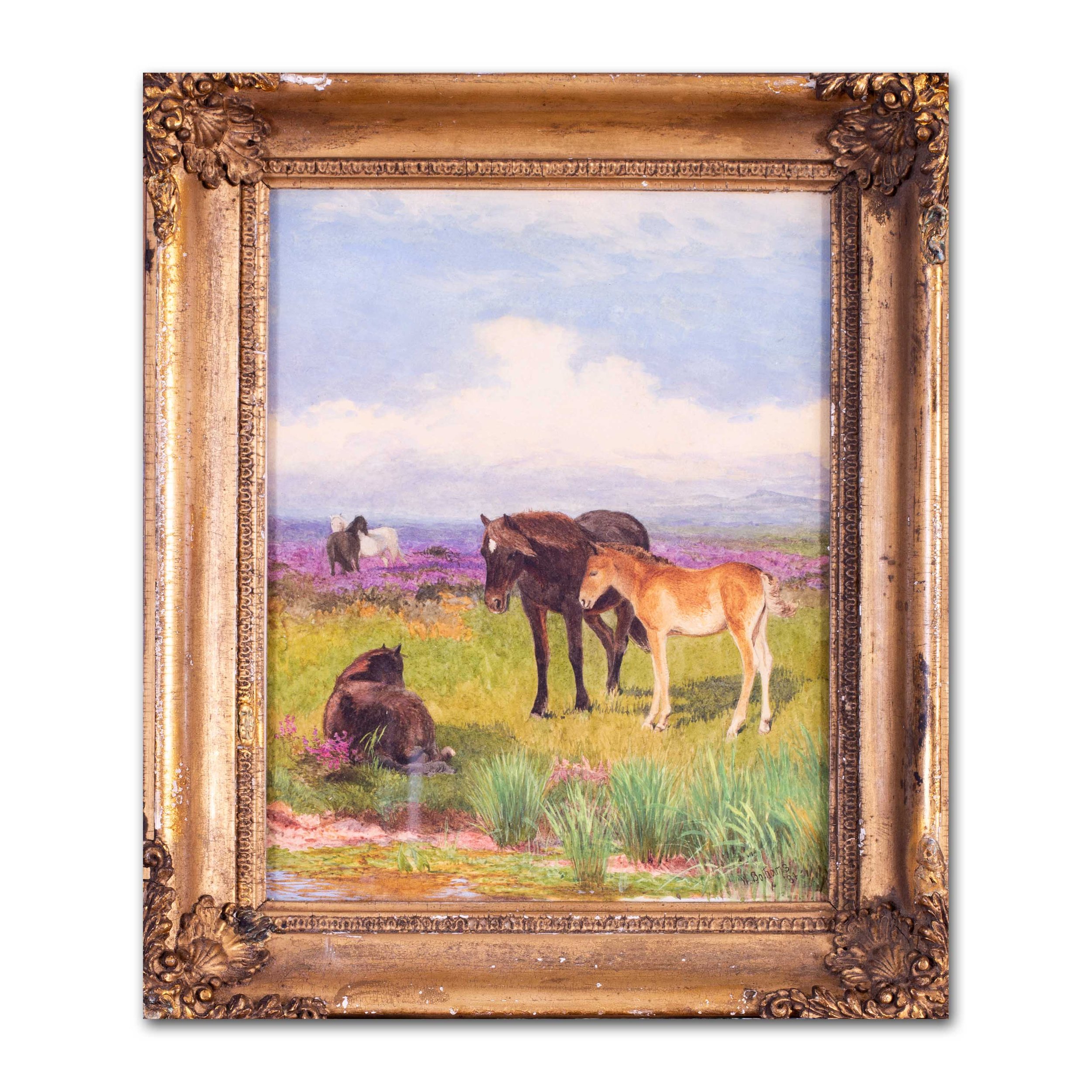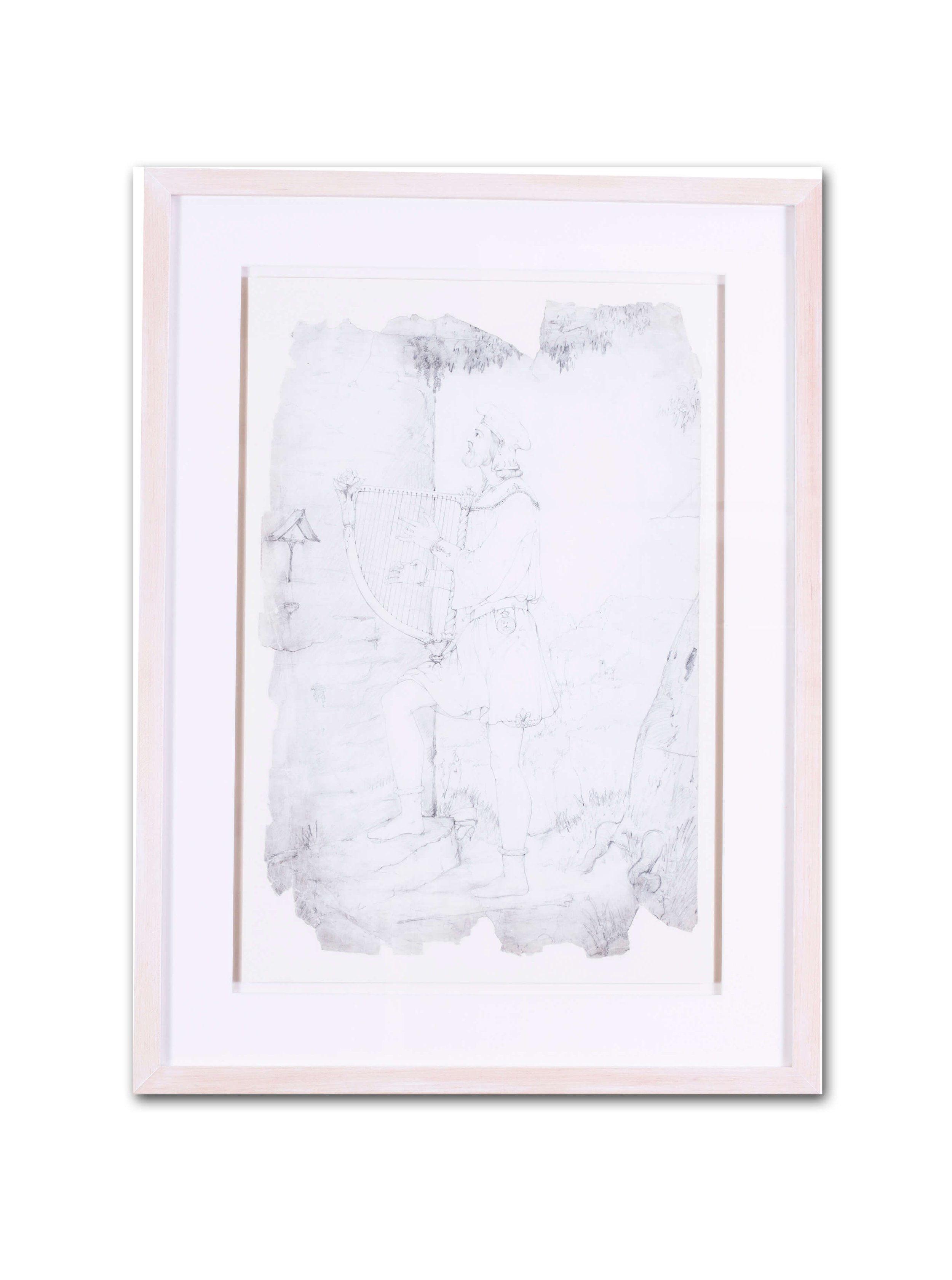SOLD
George Frederic Watts OM RA (British, 1817 – 1904)
Get thee beyond me, Satan
red chalk on paper
10.5/8 x 8.1/2 in. (27 x 21.5 cm.)
Provenance: From the private estate of David Loshak, writer, lecturer, professor of Art History, and art collector. [Author of 'George Frederic Watts 1817-1904', 'The Art of Thomas Girtin', and 'Munch', written in Danish and translation].; Anon. sale, Christie's, London, 14 Dec. 2016, lot 13 (part).; Private Collection, UK.
Literature: Veronica Franklin Gould, 'G. F. Watts. The Last Great Victorian’, New Haven & London, 2004, p.22.
Note: Watts painted the massive, sculptural, fiery figure of Satan in 1847, in preparation for fresco. The critic John Ruskin wrote ‘don’t understand the new picture, but it is glorious, and Satan has his cheekbone all right.’ Satan was a moral and, by association with Job, social protest against greed and the tyranny of the rich over the poor. Watts made a series of delicate red chalk drawings from his most important pictures for exhibition by William Agnew in 1891.
Some art critics believe this is Watt's most Romantic picture.
Watts painted the final version (see image) of this huge, stark image in the 1840s, probably around the time he returned to London after several years in Italy, in 1847.The figure is Satan, which in Hebrew is, literally, the opponent or adversary. The figure rises and turns within a flame-like background, suggesting the lake of fire to which Satan is described as being chained at the beginning of John Milton's Paradise Lost(1667). Milton portrays Satan as a charismatic, attractive figure.
Watts captures this (anti-)heroic interpretation of the great enemy, but also has an eye on the Romantic artist-poet William Blake. In Blake's own epic poem Milton (1804-10), the older poet returns to London in order, among other things, to account for his sympathetic rendering of Satan. The book's preface contains the poem 'Jerusalem', and its frontispiece shows an extraordinary image of a nude Milton in a posture close to that of Satan in Watts's painting.
George Frederic Watts OM RA (British, 1817 – 1904)
Get thee beyond me, Satan
red chalk on paper
10.5/8 x 8.1/2 in. (27 x 21.5 cm.)
Provenance: From the private estate of David Loshak, writer, lecturer, professor of Art History, and art collector. [Author of 'George Frederic Watts 1817-1904', 'The Art of Thomas Girtin', and 'Munch', written in Danish and translation].; Anon. sale, Christie's, London, 14 Dec. 2016, lot 13 (part).; Private Collection, UK.
Literature: Veronica Franklin Gould, 'G. F. Watts. The Last Great Victorian’, New Haven & London, 2004, p.22.
Note: Watts painted the massive, sculptural, fiery figure of Satan in 1847, in preparation for fresco. The critic John Ruskin wrote ‘don’t understand the new picture, but it is glorious, and Satan has his cheekbone all right.’ Satan was a moral and, by association with Job, social protest against greed and the tyranny of the rich over the poor. Watts made a series of delicate red chalk drawings from his most important pictures for exhibition by William Agnew in 1891.
Some art critics believe this is Watt's most Romantic picture.
Watts painted the final version (see image) of this huge, stark image in the 1840s, probably around the time he returned to London after several years in Italy, in 1847.The figure is Satan, which in Hebrew is, literally, the opponent or adversary. The figure rises and turns within a flame-like background, suggesting the lake of fire to which Satan is described as being chained at the beginning of John Milton's Paradise Lost(1667). Milton portrays Satan as a charismatic, attractive figure.
Watts captures this (anti-)heroic interpretation of the great enemy, but also has an eye on the Romantic artist-poet William Blake. In Blake's own epic poem Milton (1804-10), the older poet returns to London in order, among other things, to account for his sympathetic rendering of Satan. The book's preface contains the poem 'Jerusalem', and its frontispiece shows an extraordinary image of a nude Milton in a posture close to that of Satan in Watts's painting.
George Frederic Watts OM RA (British, 1817 – 1904)
Get thee beyond me, Satan
red chalk on paper
10.5/8 x 8.1/2 in. (27 x 21.5 cm.)
Provenance: From the private estate of David Loshak, writer, lecturer, professor of Art History, and art collector. [Author of 'George Frederic Watts 1817-1904', 'The Art of Thomas Girtin', and 'Munch', written in Danish and translation].; Anon. sale, Christie's, London, 14 Dec. 2016, lot 13 (part).; Private Collection, UK.
Literature: Veronica Franklin Gould, 'G. F. Watts. The Last Great Victorian’, New Haven & London, 2004, p.22.
Note: Watts painted the massive, sculptural, fiery figure of Satan in 1847, in preparation for fresco. The critic John Ruskin wrote ‘don’t understand the new picture, but it is glorious, and Satan has his cheekbone all right.’ Satan was a moral and, by association with Job, social protest against greed and the tyranny of the rich over the poor. Watts made a series of delicate red chalk drawings from his most important pictures for exhibition by William Agnew in 1891.
Some art critics believe this is Watt's most Romantic picture.
Watts painted the final version (see image) of this huge, stark image in the 1840s, probably around the time he returned to London after several years in Italy, in 1847.The figure is Satan, which in Hebrew is, literally, the opponent or adversary. The figure rises and turns within a flame-like background, suggesting the lake of fire to which Satan is described as being chained at the beginning of John Milton's Paradise Lost(1667). Milton portrays Satan as a charismatic, attractive figure.
Watts captures this (anti-)heroic interpretation of the great enemy, but also has an eye on the Romantic artist-poet William Blake. In Blake's own epic poem Milton (1804-10), the older poet returns to London in order, among other things, to account for his sympathetic rendering of Satan. The book's preface contains the poem 'Jerusalem', and its frontispiece shows an extraordinary image of a nude Milton in a posture close to that of Satan in Watts's painting.



















